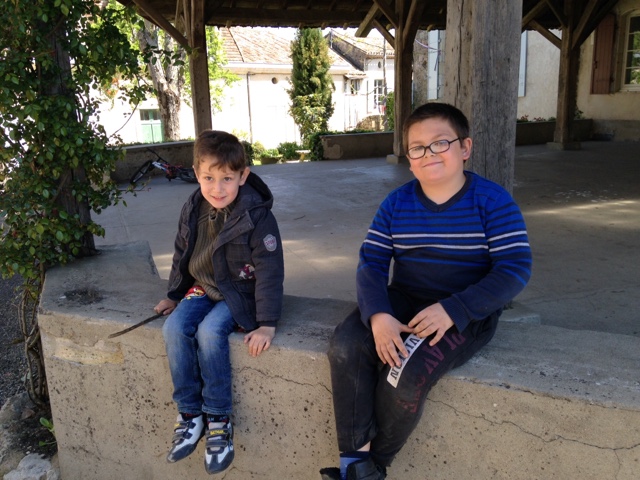Some of my favorite French wines come from this region just outside the city of Bordeaux. Wines here are made from Cabernet Sauvignon, Merlot, Cab Franc and Petit Verdot (red) and Semillion and Sauvignon (white). This is typical throughout the Bordeaux region, with the one main difference being that the soils on the left side of the river--mostly gravelly--differ from the soils on the right side, which is mostly sand and limestone, so grapes behave and taste differently from one side of the river to the other.
In Pessac-Léognan, which is on the left side, the red wines are heavy on Cabernet Sauvignon, with smaller percentages of the other three. The thing about Cabernet is that I typically don't like it at all--especially if it's from a warm climate like California, but here in the P-L region the cool temperatures make for wines with a lot of natural acidity, lower alcohol and bright freshness.
This was evident in our tasting at Domain de Chevalier today. Our guide, who in his email told me he'd only have 30 minutes to show us around because they had professional tasters coming, ended up spending nearly two hours with us and gave us one of the best wine tours we've experienced. Remi Endange is the G.M. of Chevalier and has worked there for some thirty years. His, and that of the owners, goals are to create a product using the magic formula of weather, soil and vine--and little else.
Everything at the winery showed an amazing respect for the land and a passion for innovation. For example egg-shaped fermentation tanks allow the grapes to circulate on their own, eliminating the need for human intervention to stir up the juice and give it more contact with the skins. They even commissioned a French cooper to create the ultimate aging vessel--an egg-shaped oak barrel!
After an hour of touring the beautiful facility, we went to the tasting room and experienced what we both agreed was the best red wine we've tasted in years. It's admittedly pricey at between $80-$100 US for a bottle, and I'm not even sure I'd buy it at that price, but what we tasted today was an incredible combination of sustainable farming techniques, innovative winemaking ideas, perfect weather and proper aging. All of these in harmony to create a little magic. I feel I know now what an incredible Bordeaux wine tastes like.
Our second wine visit was to Chateau Pape Clement, which is named after the Pope who was from the Bordeaux area and was Archbishop of Bordeaux before becoming Pope. The chateau is a lovely classic Gothic structure with all manner of turrets.
The grounds are stunning too. Inside, the vast fermentation and storage rooms were like a showplace--chandeliers, stained glass and religious art gave the winery a cathedral-like feel. Our tourguide was great.
After the grounds and facility tours, she handed us over to the staff in the tasting room who guided us through six different wines made by vineyards owned by the same owner as Pape Clement. Two were from Provence, one from Sauternes, one from the Medoc. Happily, we were allowed to try the famed grand cru classé Chateau Pape Clement, but that was the only wine actually from the region we were visiting. I was irked by that. Still, the Pape Clement was quite good--it should be at $135 per bottle, but I didn't taste anything else that excited me.





























